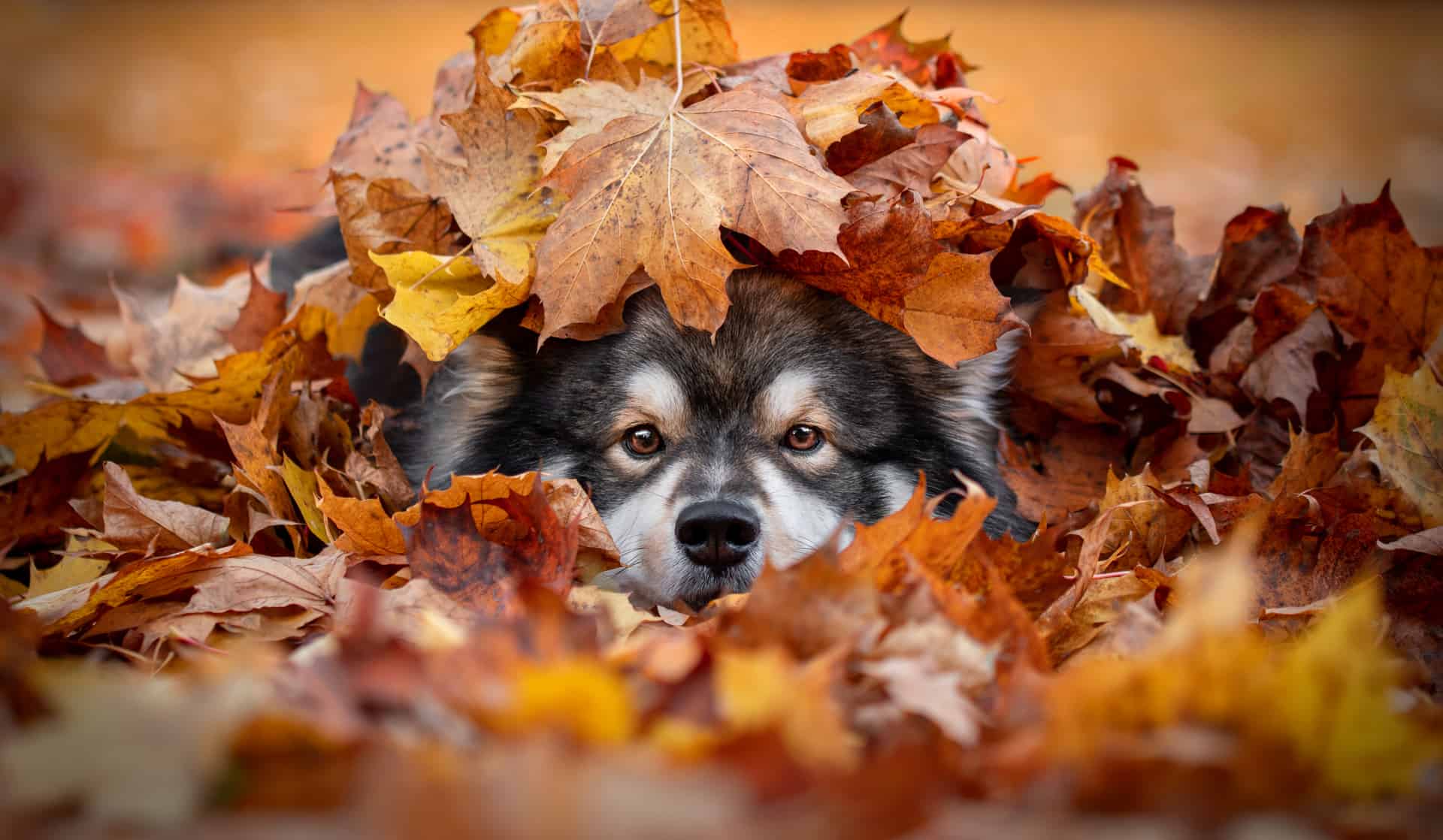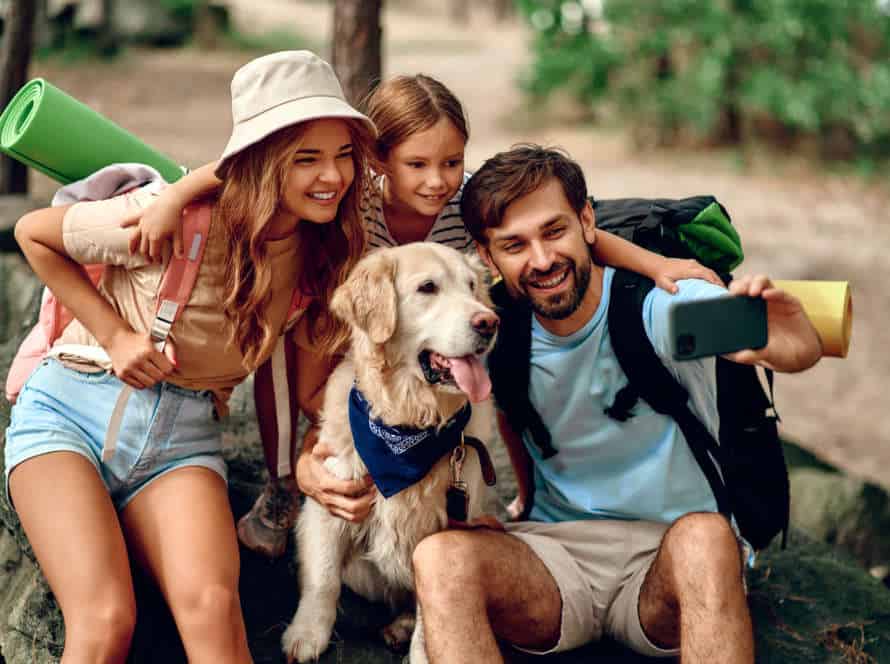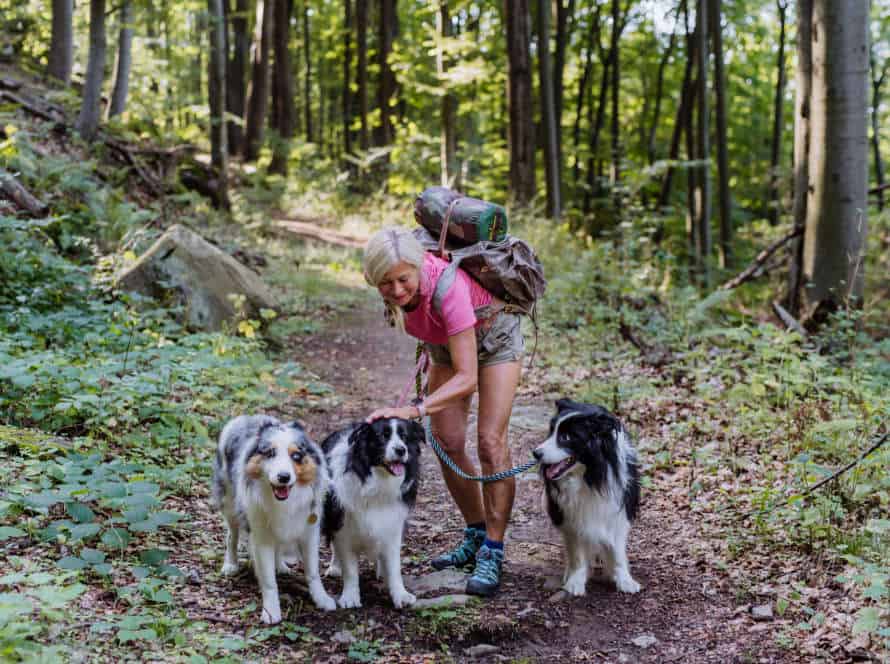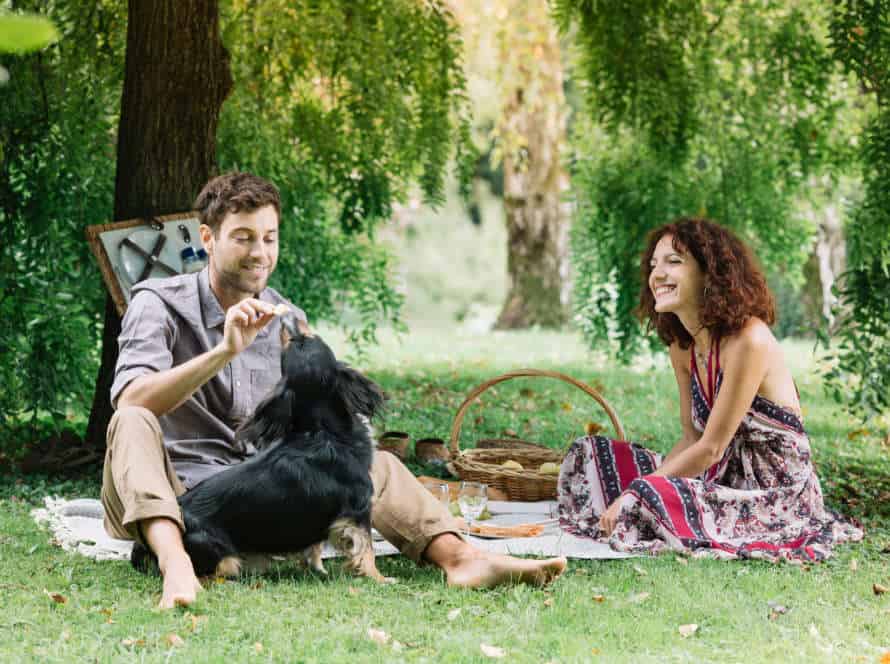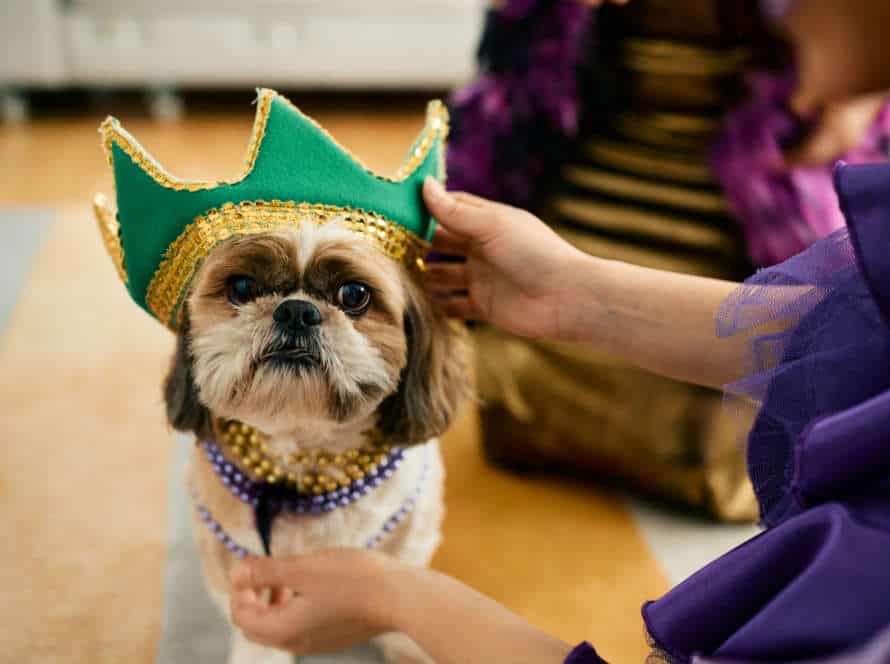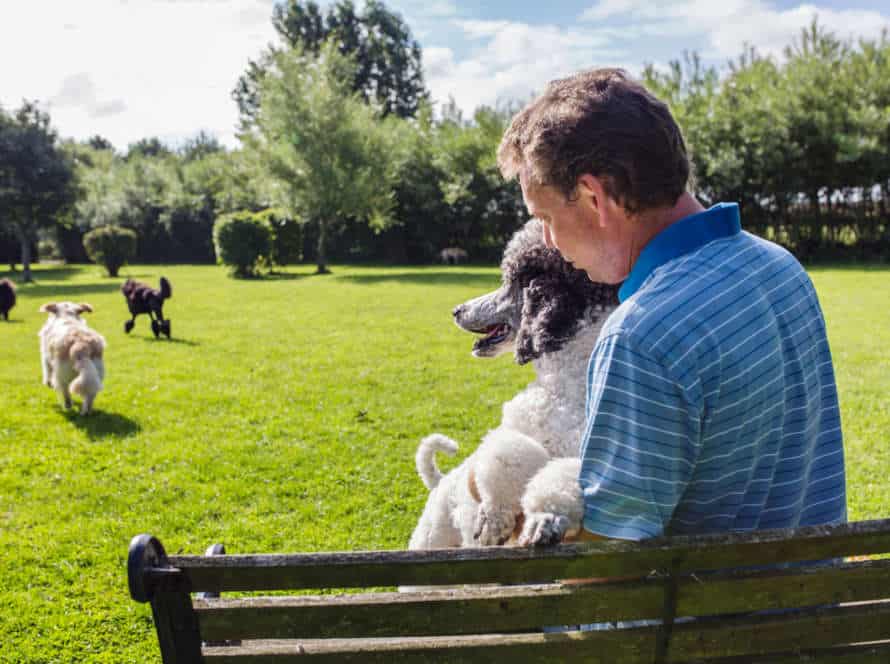Understanding Fearful Dogs
Fearful dogs often face problems. They need owners that are patient and understanding. Positive reinforcement training is a great help! It’s when you reward the dog for good behaviour. This encourages the dog to be more confident and relaxed.
How can we use positive reinforcement for scared pups? Let’s find out!
Signs of Fearful Dogs
A scared dog may show a range of signs that reveal their uneasiness, stress, or terror. Some usual clues of frightened dogs are: shaking, concealing, panting, yawning, preventing eye contact, and hostility. A fearful dog could also salivate excessively, have no appetite, or be overly active.
To assist a petrified pooch, positive reinforcement is the way to go. Positive reinforcement-based training necessitates honoring good behavior, which will construct the dog’s assurance and reliance. Stay away from penalizing the dog for their scared behavior as this will only make them more disquieted and distrustful.
Try rather to engage the dog with playthings or snacks, and slowly expose them to fresh people and circumstances in a positive and managed way. Patience, uniformity, and kindness are the keys to aiding a distressed canine. Bear in mind, constructing your dog’s faith and trust needs time and effort, but the outcomes are worthwhile.
Causes of Fearfulness in Dogs
Apprehending the usual sources of worry in dogs is essential for offering them the right attention and teaching they need to conquer their fears.
A few of the general causes of fear in dogs include:
- Insufficient early socialization.
- Terrible experiences such as misuse or negligence.
- Heredity or breed inclination.
- Missing of positive reinforcement training.
- Medical ailments, e.g. pain or illness.
Positive reinforcement training is a powerful way to address fearfulness in dogs. This involves honouring desirable behaviours with treats, commendation, and fondness, instead of using punishment or aversives. With patience, steadiness, and the right training method adapted to the sole dog’s needs, even the most scared dogs can learn to feel more stable and confident.
Importance of Positive Reinforcement for Fearful Dogs
Positive reinforcement is key for training scared pooches! Encourage and reward the behaviors you want to see more of. This will boost self-confidence and reduce anxiety.
Frightened or anxious dogs need extra care and attention during training. Reward good behavior with treats or praise. Don’t punish them for bad behavior.
Consistent positive training methods, like clicker training or target training, build trust and decrease fear. Positive reinforcement helps dogs connect training and learning with enjoyable rewards, making them more motivated.
Pro tip: Get help from a professional dog trainer if you’re having difficulty with your fearful pup. Positive reinforcement techniques can be hard to get right. A good trainer can create a personalized plan for your dog’s individual needs.
Positive Reinforcement Techniques for Fearful Dogs
Scared reactions from dogs are a typical response to unfamiliar things or new settings. These reactions can be seen as aggression, running away, barking, too much whining and other signs of distress. But, these reactions can be controlled with positive reinforcement methods. Let us discover how to use positive reinforcement when managing fearful dogs.
Creating a Safe Environment
Creating a secure atmosphere for your frightened pup is important for their wellbeing and joy. Positive reinforcement techniques can be a great help to assist your dog in conquering their worries, and eventually feeling more at ease.
Here are some positive reinforcement techniques to think about:
- Counterconditioning: Connecting the thing, sound, or situation your dog is scared of with something nice, like treats or playtime.
- Desensitization: Gradually introducing your dog to what they fear in a safe place, beginning with a low intensity version and slowly strengthening it.
- Clicker training: Making use of a clicker to reward your dog for pleasant actions and behavior.
- Reward-based training: Rewarding your dog with treats, verbal encouragement, or playtime when they behave well.
By forming a safe and positive environment for your fearful dog, you can aid them in conquering their anxieties and feeling more confident in their surroundings.
Counterconditioning Techniques
Counterconditioning is a technique to help fearful dogs. It uses positive reinforcement to replace negative reactions with something good. Here are some popular counterconditioning techniques:
- Treat or toy focused training: Offer a treat or a toy when near the trigger stimulus.
- Clicker training: Use a clicker to mark when near the trigger stimulus. Then give a treat or toy.
- Desensitization training: Gradually expose to the trigger in a safe way until desensitized.
These techniques help fearful dogs overcome their fears, improve confidence, and have a better life.
Desensitization Techniques
Desensitization is great for dog owners who want to help their furry friends with their fears and anxieties. Positive reinforcement is seen as the best and kindest way to desensitize. Here are a few examples:
- Counterconditioning: Linking a scary thing (e.g. thunder) with something nice (e.g. treats, toys or attention) to change the emotion response.
- Clicker training: Use a clicker sound to tell the pup they did something right, with a reward afterwards.
- Gradual exposure: Slow and steady exposure to the fearful stimulus, starting low and increasing intensity as the pup gets used to it.
Be patient and consistent when using positive reinforcement! With enough practice, these techniques can help your pup be happy and stress-free.
Building Confidence in Fearful Dogs
Fearful dogs can bring their owners stress and worry. However, with the right attitude, you can help your pup overcome their fearfulness. Positive reinforcement is one of the most successful methods. This is a great way to create a strong bond between you and your pet, and gradually build up their confidence. Let’s dive deeper into the subject and find out how to use positive reinforcement to make scared dogs more relaxed and confident.
Confidence Building Exercises
Building trust in scared dogs is vital for them to have a happy, healthy life. Positive reinforcement and certain exercises can help boost their self-esteem.
Try these confidence-building exercises for scared dogs:
- Place Training: Teach them a ‘place’ command by giving them a mat or bed. Reward them when they stay on it. This teaches them to be relaxed and secure in a specific spot.
- Obstacle Courses: Set up a course with cones, tunnels, and other objects for them to run through. This will help them gain agility and trust.
- Hide and Seek: Play hide and seek with them, hiding treats or toys in different places for them to find. This assists them to use their smell and increase their confidence in solving problems.
- Positive Reinforcement Training: Concentrate on rewarding good behavior and ignoring bad behavior, to give your dog trust and confidence in you.
Advice: Patience and reliability are important when developing trust in scared dogs. Always appreciate and praise their efforts, no matter the size, to help them form positive connections with new experiences.
Incorporating Play and Exercise
Giving opportunities for play and exercise can be very helpful in building confidence in timid pooches. This, combined with positive reinforcement training, can help them discharge energy and lower their stress levels, making them more open to learning.
Here are some ways you can use play and exercise to train a scared pup:
- Fetch or tug-of-war with a toy your dog likes. Reward them with treats and compliments!
- Start with quiet walks or hikes, and increase the stimulus level over time by praising good behaviors.
- Teach your pup some simple agility exercises like jumping or going through tunnels.
Be sure to use positive reinforcement and take cues from the dog to avoid overwhelming them. Show patience, and reward even the smallest progress with words of encouragement and treats!
Providing Consistent and Clear Communication
Clear and consistent communication is a must for building trust in scared pooches. Positive reinforcement can create a secure and trusting atmosphere for your four-legged friend. Here’s some advice:
- Use simple and direct commands when you interact with your canine pal. Don’t increase the volume of your voice or use physical punishment, as this could cause fear and nervousness.
- Praise and treats should be given to reward good behavior. This helps your pup connect good behavior with great outcomes.
- Don’t punish or reprimand your doggo for bad behavior. Rather, redirect their focus and give them a reward for good behavior.
- Have patience and stay consistent with your training. Confidence takes time and effort, but with positive reinforcement and clear communication, your pup can conquer their worries and fears.
Working with a Professional Trainer
Your dog displaying fearful behaviour? Work with a professional dog trainer! They use positive reinforcement methods to help your pup overcome their fear. An expert trainer will create a structured program to build your pup’s confidence and teach you how to handle them properly.
Need to know more? Here’s what you should know about working with a professional trainer:
Choosing a Qualified Trainer
Choosing a qualified dog trainer is vital for your pup’s safety, good conduct and overall wellbeing. Here are some tips to assist you in finding the right pro:
- Look for one who is certified and knowledgeable in doggie behaviour, psychology and training.
- Pick one who uses positive reinforcement like treats, toys and praise to reward good behaviour and discourage bad habits.
- Avoid trainers who use shock collars, prong collars or physical punishment as these can harm your pooch physically and mentally.
- Read reviews, testimonials and references from dog owners who have used the trainer in the past.
- Check out a training session before enrolling your pooch to see the trainer’s communication style, tone and handling skills.
- Go for trainers who are compassionate, patient and understanding of anxious or fearful dogs.
- Remember that a qualified and professional dog trainer is an investment in your pup’s future, health and joy.
Pro tip: Always trust your instincts and select a trainer you feel comfortable with and whose methods match your values and beliefs.
Goals and Expectations of Training
Goals & expectations for training a fearful pup with a pro include:
- creating a positive atmosphere for them to grow.
Expectations are:
- improved confidence & less anxiety,
- new skills & behaviours,
- understanding their behaviour.
Goals are:
- to help them feel secure & bond with you,
- to foster trust between them & their trainer.
When working with a pro, positive reinforcement is used. This means rewarding good behaviour with treats, praises or toys, instead of punishing bad behaviour. Positive reinforcement helps them feel more secure & confident, making the training more enjoyable for both.
Types of Training Methods to Avoid for Fearful Dogs
When training fearful pups, certain methods should be avoided. These are hitting, yanking the leash, shouting, and staring. Positive reinforcement is the key. Use treats, praise, and clicker training to reward good behavior. Desensitization and counterconditioning can help the pup overcome fears. Pair positive experiences with previously fearful stimuli. This builds comfort and lessens fear. Professional trainers who use positive reinforcement are the best bet. This helps create a strong bond between dog and owner.
Frequently Asked Questions
What is positive reinforcement training?
Positive reinforcement training is a method of encouraging desired behaviors in dogs by rewarding them for their good behavior. This involves using treats, toys, and praise to reinforce positive behaviors, and ignoring or redirecting negative behaviors.
Can fearful dogs benefit from positive reinforcement?
Absolutely. Positive reinforcement is especially effective for fearful dogs as it creates a safe and trusting environment that encourages them to learn without the stress or anxiety that can come with punishment-based training methods.
What are some examples of positive reinforcement for dogs?
Some examples of positive reinforcement for dogs include giving them treats for performing a desired behavior, providing them with toys or playtime as a reward, and praising them with verbal cues such as “good boy” or “good girl”.
How long does it take for positive reinforcement to work?
The amount of time it takes for positive reinforcement to work varies depending on the dog and the behavior being reinforced. However, most dogs respond well to positive reinforcement training, and many will begin exhibiting desired behaviors within the first few training sessions.
Can positive reinforcement work for all types of dogs?
Positive reinforcement can work for all types of dogs, regardless of breed or temperament. However, it’s important to approach each dog as an individual and to tailor training methods to their unique needs and learning style.
What are the benefits of using positive reinforcement training with fearful dogs?
Positive reinforcement training with fearful dogs can help build their confidence, reduce anxiety, and create a positive relationship between the dog and their owner. It also helps to create a safe and predictable environment for the dog, reducing the likelihood of aggressive or reactive behavior.

